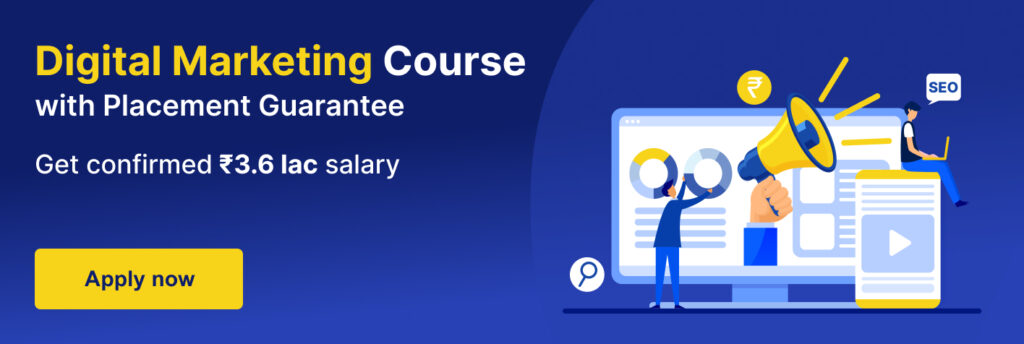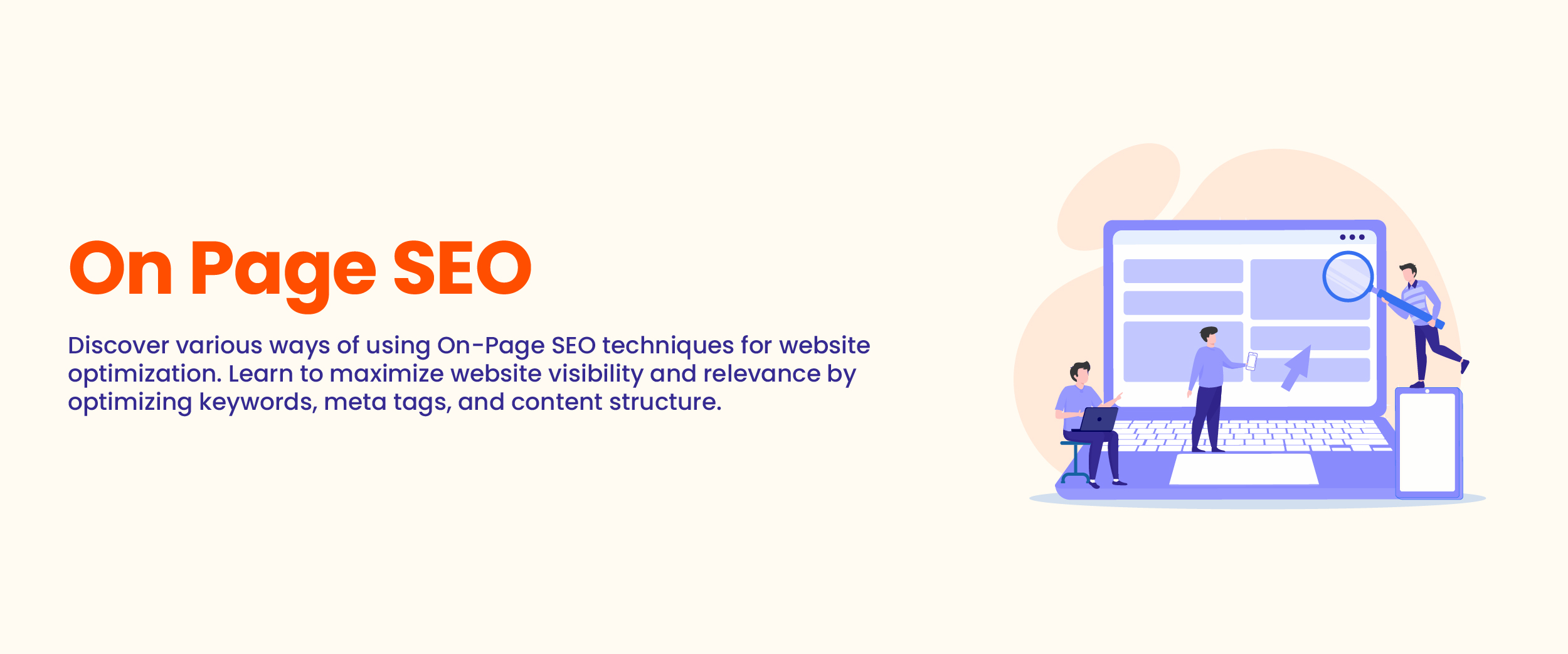On-Page SEO – A Guide to Optimizing Your Web Page Rankings
Did you know about 67% of all clicks go to the first five organic results? It is because of good on-page SEO practices. It is a set of strategies and techniques used to optimize web pages for better performance in search engine rankings. It focuses on elements such as content, images, headings, structure, titles, meta tags, and more. By optimizing these elements on each page of your website or blog post you can increase the chances that it will appear higher in relevant searches.
What is On-Page SEO?
On-page SEO is the practice of optimizing individual web pages to enhance a website’s search engine rankings and visibility. It involves several different elements, including content, keywords, images, internal linking, outbound links, and more. E-A-T(Expertise/Authority/Trustworthiness) is an important factor when it comes to on-page SEO as Google uses this criteria to assess the quality of websites and determine whether they should be ranked highly in its results pages. This means that businesses must ensure their site has high levels of expertise authority and trustworthiness if they want their on-page SEO efforts to yield positive results. To learn more about on-page SEO meaning, you can pursue a professional digital marketing course with placement guarantee.
Understanding the Main On-Page SEO Elements
Let’s have a look at some of the elements of on-page SEO:
- Content: Content is one of the most important elements when it comes to on-page SEO. Quality content should be relevant, informative, and engaging for readers so that they are more likely to remain on the page longer and return in the future. It also needs to contain keywords that are relevant to your business’s services or products so that search engine robots can recognize them. Additionally, including multimedia such as images, videos, audio files, etc., can help make your content more engaging for visitors and give you a better chance of gaining higher search rankings.
- Keywords: Keywords play an important role in helping potential customers find your website during a web search. When selecting keywords for use within your content, aim to choose ones that have high relevance but low competition levels; this will help increase the chances of appearing further up in SERP (Search Engine Results Page). Additionally, include keyword phrases rather than single words wherever possible – this helps target specific topics related to what you offer which will result in increased click-through rates from users who are looking for exactly what you provide.
- Images: Images can also be used strategically within pages as part of on-page SEO efforts. Not only do visually appealing images draw attention from potential customers but they can also be optimized with “alt tags” which describe their contents using keywords – thereby increasing relevancy scores by search engines like Google and improving chances at ranking higher up within SERPs results pages. This practice should be done carefully however since overuse of alt tags could lead to penalization by Google’s algorithms or even blacklisting if too many irrelevant terms are included.
- Internal Linking & Outbound Linking: Internal linking involves creating hyperlinks from one page on your website back onto itself; this strengthens relationships between different areas across your site and encourages visitors to explore other sections while providing additional opportunities for keyword optimization through anchor text creation (text used inside links). Outbound linking is similarly beneficial since it provides
Optimizing Title Tags and Meta Descriptions
Let’s look at some ways through which you can optimize your titles and meta descriptions:
- Creating SEO-Friendly Titles: Titles are an important part of on-page SEO, as they help to inform search engines and users alike about the content that is contained within a given page. When creating titles for your pages, it’s important to make sure that they accurately reflect the topic at hand while also including any relevant keywords. Additionally, try to keep them short (no more than 65 characters) so that they don’t get truncated in SERPs or appear too long when shared on social media platforms.
- Writing Descriptive Meta Descriptions: Meta descriptions are another essential element of on-page SEO – not only do they provide potential visitors with a brief synopsis of what each page contains but they can also be optimized with target keywords to help boost rankings. Aim to keep these between 150–160 characters and ensure that the text conveys the main points covered by your article or product/service information to draw readers in from SERPs results pages.
- Adding Target Keywords to Titles and Meta Descriptions: Once you have created both your title and meta description, it’s time to add any necessary target keywords into them – this will increase relevancy scores according to search engine algorithms which will ultimately improve ranking positions within SERP results pages. Try not to overuse these, however; instead, focus on naturally incorporating them into each piece of text where possible without compromising readability or making it sound unnatural/forced.
How to Optimize Content for On-Page SEO?
Let’s look at a few ways to optimize content for on-page SEO:
- Optimizing Images: Images are a great way to add visual appeal to your pages and can also be used strategically when optimizing for on-page SEO. By adding “alt tags” or alternative texts, you can include relevant keywords which will help search engine robots recognize the content of the image more easily – thereby increasing relevancy scores and improving chances at ranking higher within SERP results pages. Additionally, reducing file size and compressing any larger images can ensure that they load quickly without compromising quality – this is particularly important as page loading speed has become an increasingly important factor in determining rankings.
- Creating SEO-friendly URLs: URL structures play an important role in helping both customers and search engines understand what each page contains; therefore it’s essential to make sure that these are optimized with target keywords whenever possible. This should be done carefully however since overuse of certain terms could lead to penalization by Google algorithms so try not to go overboard with keyword stuffing.
- Utilizing Structured Data: Structured data provides additional context to webpages by allowing them to be marked up according to specific types such as reviews, events, products, etc., which allows users (and crawlers) alike to get a better understanding of the information contained within them. Utilizing this technology properly can provide several benefits including enhanced visibility within SERP results pages, improved click-through rates from potential customers who are searching for exactly what you offer, and even increased levels of traffic overall – all factors which will have a positive impact on your website’s on-page SEO efforts.


Additional On-Page SEO Techniques
Let’s look at some additional techniques through which on-page SEO can be done:
- Improving Page Speed: Site speed is a major factor when it comes to on-page SEO as pages that load faster are more likely to rank higher in SERP results. To ensure your website’s pages perform well, you should regularly test their loading times and address any issues such as slow hosting or bulky images which could be causing delays. Additionally, using browser caching can also help by storing static content like HTML files and images in the user’s memory so that they don’t have to be downloaded each time someone visits the page – this will result in improved overall performance for both desktop and mobile versions of your site.
- Incorporating Structured Data: Structured data allows webpages to be marked up according to specific types (such as events, reviews, etc.), providing extra context for both users and crawlers alike which can improve visibility within SERPs if implemented correctly. This technology has been increasingly used over recent years due to its ability to provide additional information about a given product or service without taking up much space – something which helps search engines understand what your website offers better while also improving chances at appearing higher up within rankings pages.
- Ensuring Mobile Compatibility: With an ever-increasing number of people now accessing websites from their mobile devices, it is essential that businesses make sure their sites are optimized for use on these platforms too; otherwise, customers may find themselves unable to interact with them easily resulting in lost opportunities through abandonment or worse still – negative reviews spreading throughout the internet. Use tools such as Google Mobile Testing Tool to check compatibility between different browsers/operating systems before launch; they will also allow you to identify any areas needing improvement regarding size optimization (for small screens) or navigation simplification etc.
Conclusion
In conclusion, on-page SEO is an important element of digital marketing and one which should not be overlooked. From optimizing titles and meta descriptions to ensure they contain the necessary target keywords to adding structured data for improved visibility in SERPs results pages – there is a range of tactics that can help improve rankings while also providing customers with a better overall experience.







